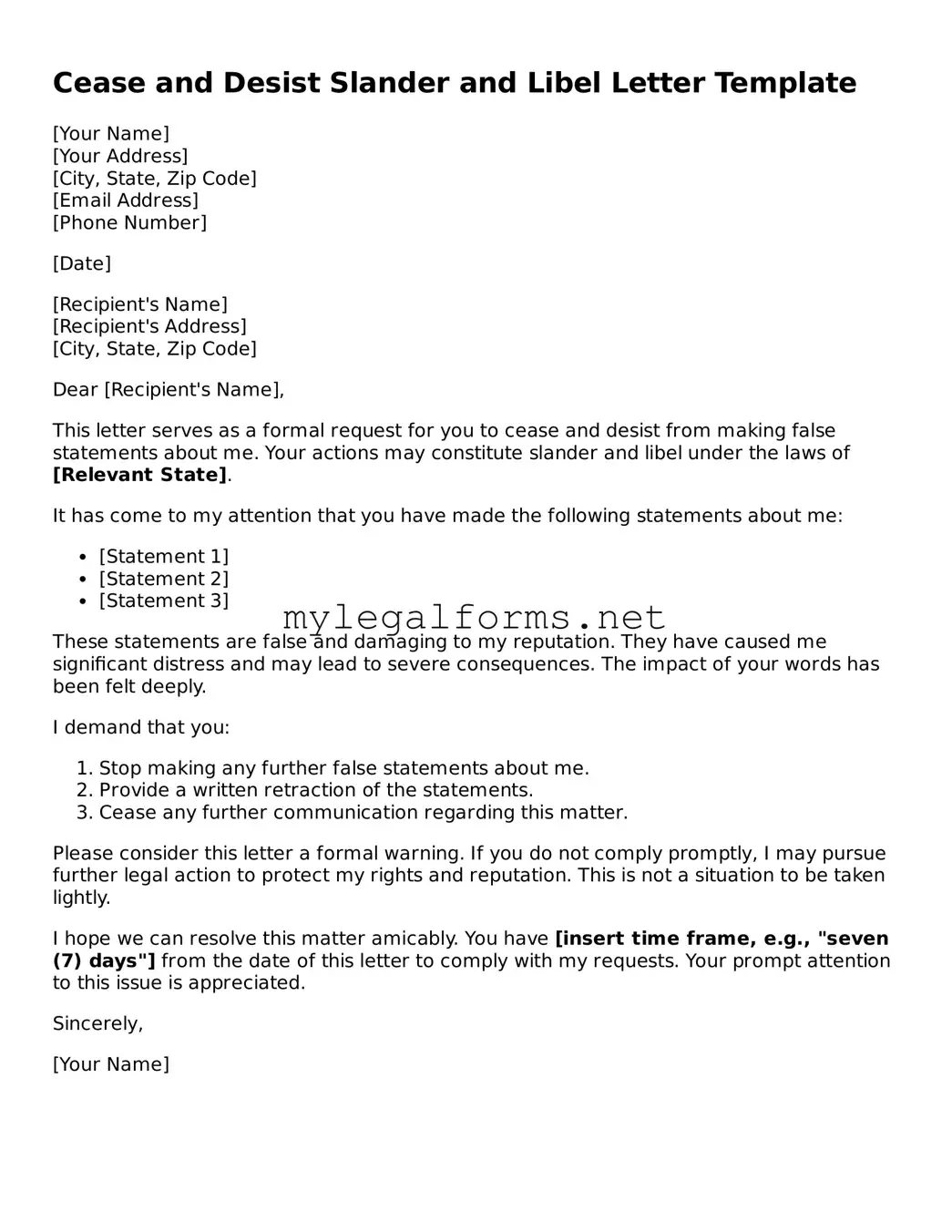Cease and Desist Slander and Libel Letter Template
[Your Name]
[Your Address]
[City, State, Zip Code]
[Email Address]
[Phone Number]
[Date]
[Recipient's Name]
[Recipient's Address]
[City, State, Zip Code]
Dear [Recipient's Name],
This letter serves as a formal request for you to cease and desist from making false statements about me. Your actions may constitute slander and libel under the laws of [Relevant State].
It has come to my attention that you have made the following statements about me:
- [Statement 1]
- [Statement 2]
- [Statement 3]
These statements are false and damaging to my reputation. They have caused me significant distress and may lead to severe consequences. The impact of your words has been felt deeply.
I demand that you:
- Stop making any further false statements about me.
- Provide a written retraction of the statements.
- Cease any further communication regarding this matter.
Please consider this letter a formal warning. If you do not comply promptly, I may pursue further legal action to protect my rights and reputation. This is not a situation to be taken lightly.
I hope we can resolve this matter amicably. You have [insert time frame, e.g., "seven (7) days"] from the date of this letter to comply with my requests. Your prompt attention to this issue is appreciated.
Sincerely,
[Your Name]
